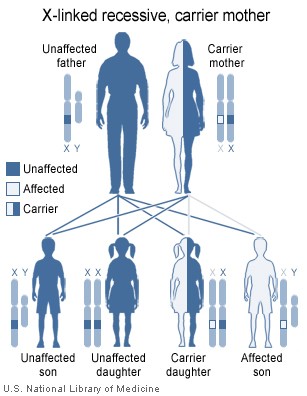Sandbox simrat: Difference between revisions
Simrat Sarai (talk | contribs) |
Simrat Sarai (talk | contribs) No edit summary |
||
| Line 1: | Line 1: | ||
__NOTOC__ | __NOTOC__ | ||
[[File: | [[File:Cascade_1.png|left|thumb|. The white area in the upper lobe is cancer; the black areas indicate the patient was a smoker]] | ||
Genetic deficiencies and a rare [[autoimmune disorder]] may lower plasma [[clotting factor]] levels needed for a normal clotting process. When a blood vessel is injured, a temporary scab does form, but the missing coagulation factors prevent fibrin formation which is necessary to maintain the blood clot. Therefore, there is no increase in bleeding time with haemophilia because platelets are intact, allowing the formation of these temporary hemostatic plugs (clots). However, "late" bleeding is affected, because these hemostatic plugs are not able to be maintained. | Genetic deficiencies and a rare [[autoimmune disorder]] may lower plasma [[clotting factor]] levels needed for a normal clotting process. When a blood vessel is injured, a temporary scab does form, but the missing coagulation factors prevent fibrin formation which is necessary to maintain the blood clot. Therefore, there is no increase in bleeding time with haemophilia because platelets are intact, allowing the formation of these temporary hemostatic plugs (clots). However, "late" bleeding is affected, because these hemostatic plugs are not able to be maintained. | ||
===Genetic structure===800px-Classical_blood_coagulation_pathway.png | ===Genetic structure===800px-Classical_blood_coagulation_pathway.png | ||
[[Image:XlinkRecessive.jpg|left|thumb| | [[Image:XlinkRecessive.jpg|left|thumb|800-px_classical_blood_coagulation_pathway]] | ||
Females possess two X-chromosomes, whereas males have one X and one [[Y chromosome]]. Since the mutations causing the disease are [[recessive gene|recessive]], a woman carrying the defect on one of her X-chromosomes may not be affected, as the equivalent [[allele]] on her other chromosome should express itself to produce the necessary clotting factors. However the Y-chromosome in men has no [[gene]] for factors VIII or IX. | Females possess two X-chromosomes, whereas males have one X and one [[Y chromosome]]. Since the mutations causing the disease are [[recessive gene|recessive]], a woman carrying the defect on one of her X-chromosomes may not be affected, as the equivalent [[allele]] on her other chromosome should express itself to produce the necessary clotting factors. However the Y-chromosome in men has no [[gene]] for factors VIII or IX. | ||
Revision as of 02:57, 25 August 2015
Genetic deficiencies and a rare autoimmune disorder may lower plasma clotting factor levels needed for a normal clotting process. When a blood vessel is injured, a temporary scab does form, but the missing coagulation factors prevent fibrin formation which is necessary to maintain the blood clot. Therefore, there is no increase in bleeding time with haemophilia because platelets are intact, allowing the formation of these temporary hemostatic plugs (clots). However, "late" bleeding is affected, because these hemostatic plugs are not able to be maintained.
===Genetic structure===800px-Classical_blood_coagulation_pathway.png

Females possess two X-chromosomes, whereas males have one X and one Y chromosome. Since the mutations causing the disease are recessive, a woman carrying the defect on one of her X-chromosomes may not be affected, as the equivalent allele on her other chromosome should express itself to produce the necessary clotting factors. However the Y-chromosome in men has no gene for factors VIII or IX.
If the genes responsible for production of factor VIII or factor IX present on a male's X-chromosome is deficient then there is no equivalent on the Y-chromosome, so the deficient gene is not masked by the dominant allele and he will develop the disease.
Since a male receives his single X-chromosome from his mother, the son of a healthy female silently carrying the deficient gene will have a 50% chance of inheriting that gene from her and with it the disease; and if his mother is affected with hemophilia, he will have a 100% chance of being a haemophiliac.
In contrast, for a female to inherit the disease, she must receive two deficient X-chromosomes, one from her mother and the other from her father (who must therefore be a hemophiliac himself). Hence hemophilia is far more common among males than females. However it is possible for female carriers to become mild hemophiliacs due to lyonisation of the X chromosomes.
Hemophiliac females are more common than they once were, as improved treatments for the disease have allowed more hemophiliac males to survive to adulthood and become parents. Adult females may experience menorrhagia (heavy periods) due to the bleeding tendency. The pattern of inheritance is criss-cross type. This type of pattern is also seen in color blindness.
As with all genetic disorders, it is also possible for a human to acquire it spontaneously (de novo), rather than inheriting it, because of a new mutation in one of their parents' gametes. Spontaneous mutations account for about ⅓ of all hemophilia A and 20% of all hemophilia B cases.
If a female gives birth to a hemophiliac child, either the female is a carrier for the disease or the hemophilia was the result of a spontaneous mutation. Until modern direct DNA testing, it was impossible to determine if a female with only healthy children was a carrier or not. Generally, the more healthy sons she bore, the higher the probability that she was not a carrier. If the RH factor of the born male is different from the mother, the child will not be affected.
If a male is afflicted with the disease and has children, his daughters will be carriers for hemophilia. His sons, however, will not be affected with the disease. This is because the disease is X-linked and the father can not pass hemophilia through the Y chromosome.